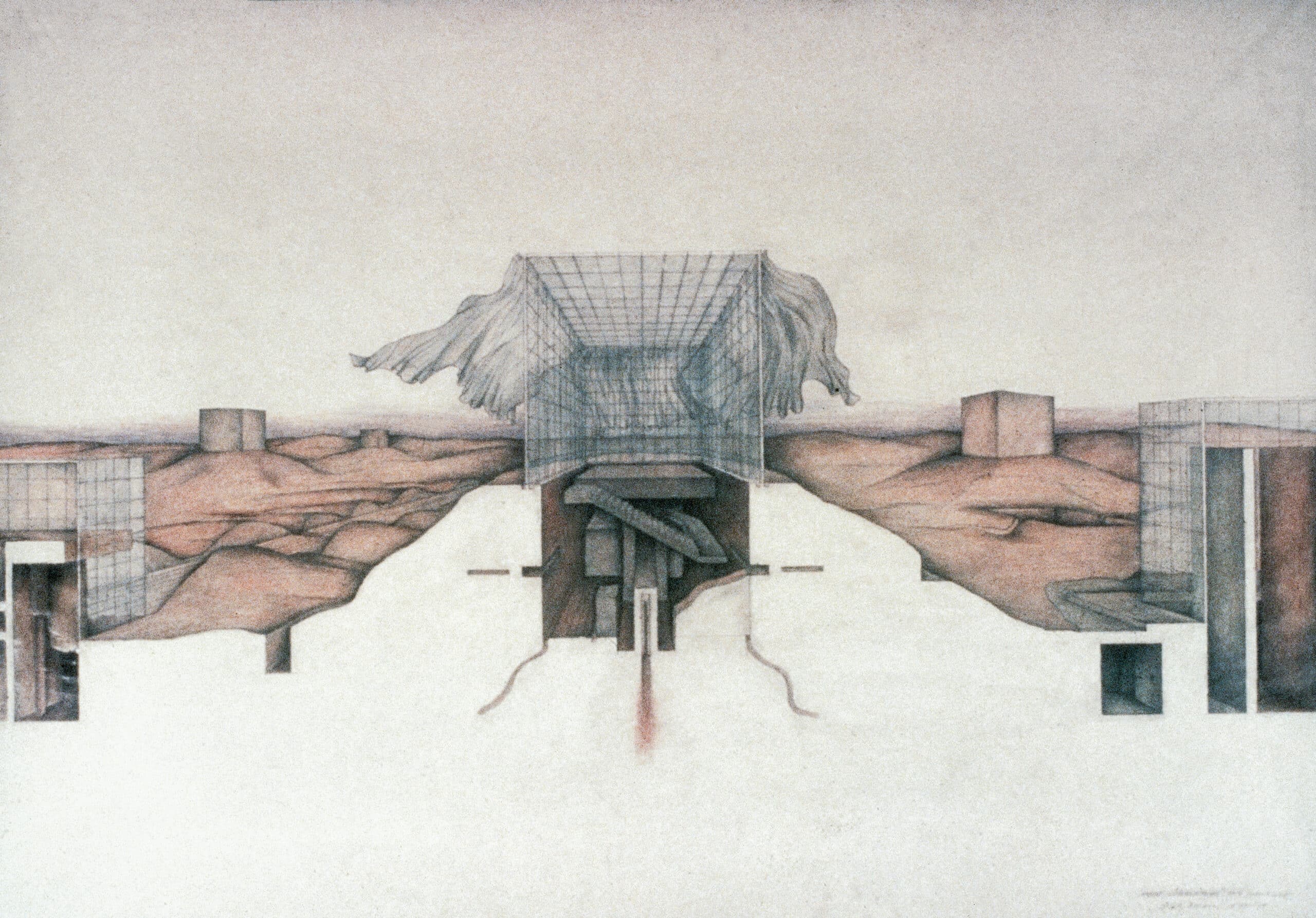DMJ – Of Ends and Origins: Raimund Abraham and the Birth of Architecture

Origin stories have a unique standing in the history of architectural thinking and imagination. They are textual, visual, and representational devices not only of what architecture aspires to be but of the world to which architecture responds and in which it operates. Effective origin stories produce the subjects which both create and inhabit architecture, as well as the kind of environment and culture which architecture constructs itself out of. To narrate such an origin story, then, is an attempt to recognise and give meaning to what has transpired since the beginning – an act of self-affirmation through the creation of an imaginary Big Bang from which and to which everything can be traced. Equally intriguing, yet more rare, are the architectural end fictions. As literary critic Frank Kermode aptly noted when exploring the cultural function of such narratives, humans have long created tales of both ends and beginnings to make sense of their own place in between.
The following essay is an exploration of architecture’s multiple origins and ends. Though it considers several examples, it focuses on three such stories and their drawn representations: Marc Antoine Laugier’s primitive hut narrative in his Essai sur l’architecture and Charles Eisen’s famous accompanying Frontispiece (1755); Gottfried Semper’s anthropological origin story in his Four Elements of Architecture and the representative Caribbean hut (1851); and finally, the last published work of the Austrian-born visionary draftsman and architect, Raimund Abraham, a collage titled The Birth of Architecture (2009), which depicts a severed tree shackled by three brick walls and growing out of a nuclear crater. Exploring each story in relation to one another, the essay offers a reading of Abraham’s architectural narrative as both beginning and end: an end fiction of the architecture that originated in an Enlightenment view of nature, and a contemporary origin story of an architecture born out of the anthropocenic world which we inhabit today.
Download the full article as a printable PDF
DMJournal–Architecture and Representation
No. 3: Storytelling
Edited by Mark Dorrian and Paul Carter
ISSN 2753-5010 (Online)
ISBN (tbc)
About the author
Eliyahu Keller is an architect, architectural historian and assistant professor of history and theory of architecture at the Technion – Israel Institute of Technology, where he is currently establishing a research lab focused on exploring architectural representation, technological imaginaries, and speculative thinking. His writings have been published in various journals, including the Journal of Architecture, the Journal of Architectural Education, Thresholds, and the Architect’s Newspaper.
